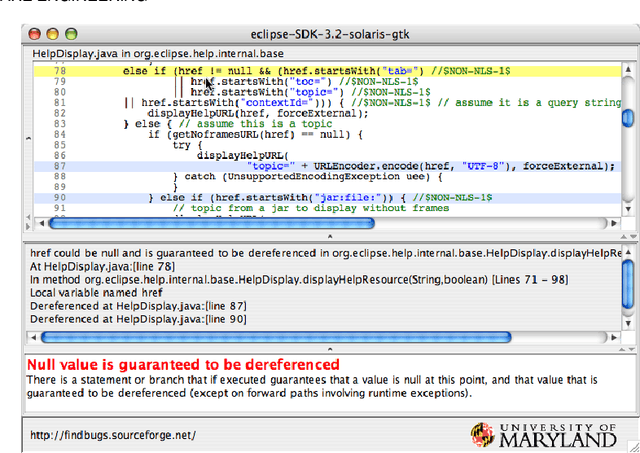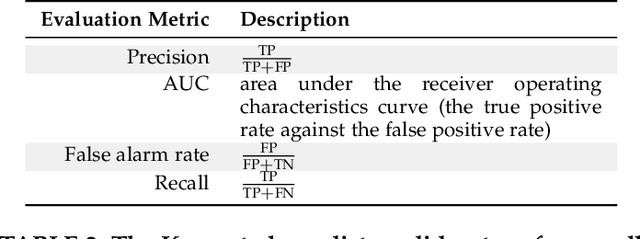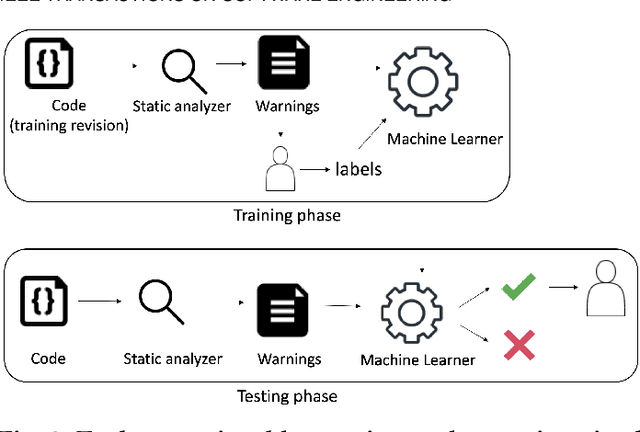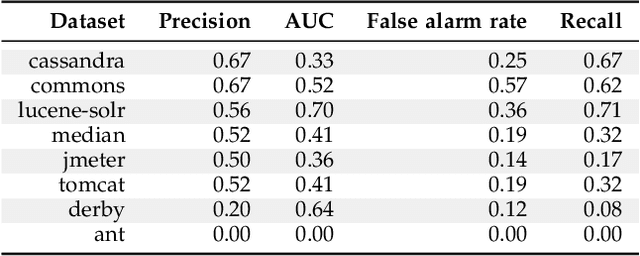How to Find Actionable Static Analysis Warnings
Paper and Code
May 21, 2022



Automatically generated static code warnings suffer from a large number of false alarms. Hence, developers only take action on a small percent of those warnings. To better predict which static code warnings should not be ignored, we suggest that analysts need to look deeper into their algorithms to find choices that better improve the particulars of their specific problem. Specifically, we show here that effective predictors of such warnings can be created by methods that locally adjust the decision boundary (between actionable warnings and others). These methods yield a new high water-mark for recognizing actionable static code warnings. For eight open-source Java projects (CASSANDRA, JMETER, COMMONS, LUCENE-SOLR, ANT, TOMCAT, DERBY) we achieve perfect test results on 4/8 datasets and, overall, a median AUC (area under the true negatives, true positives curve) of 92\%.
 Add to Chrome
Add to Chrome Add to Firefox
Add to Firefox Add to Edge
Add to Edge